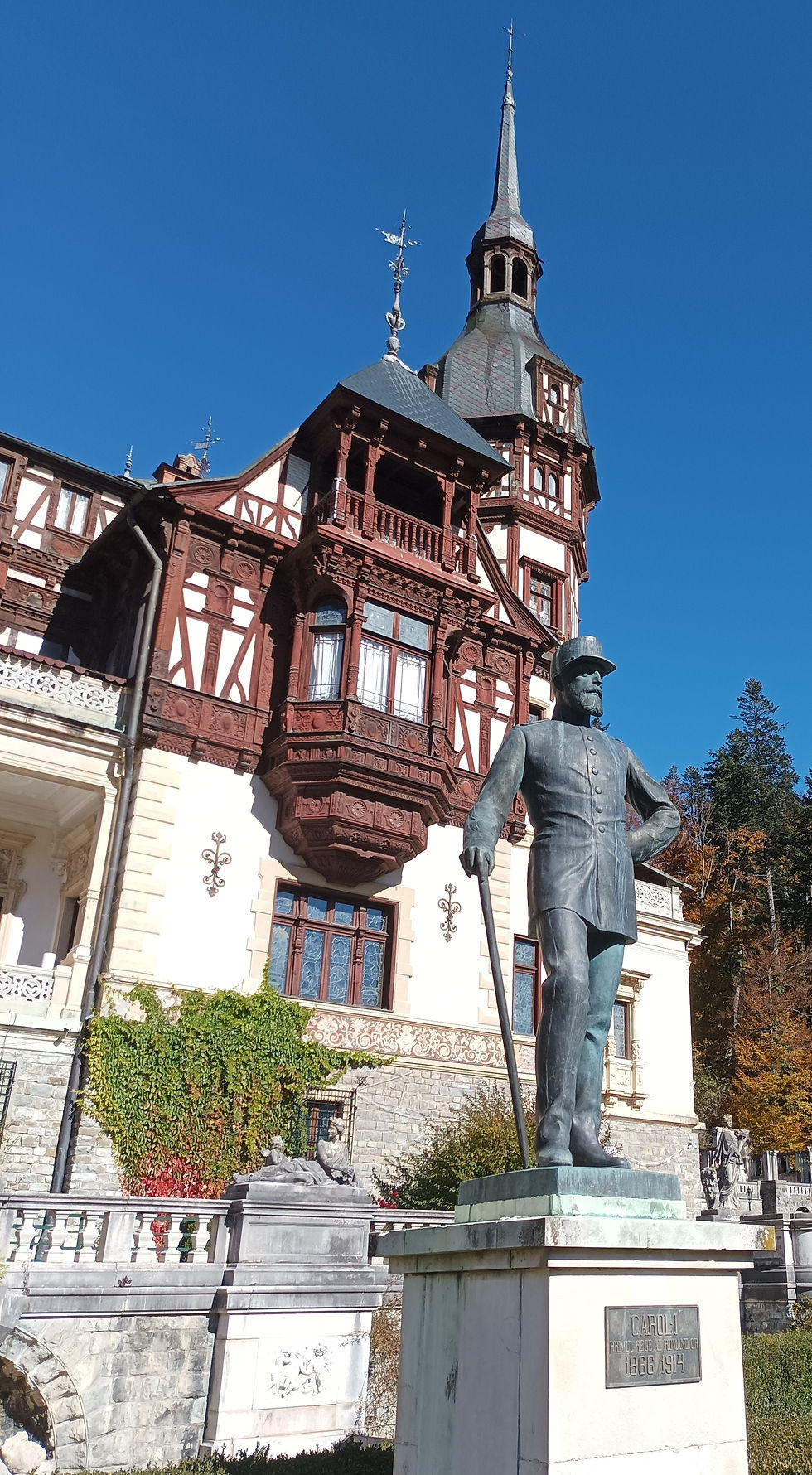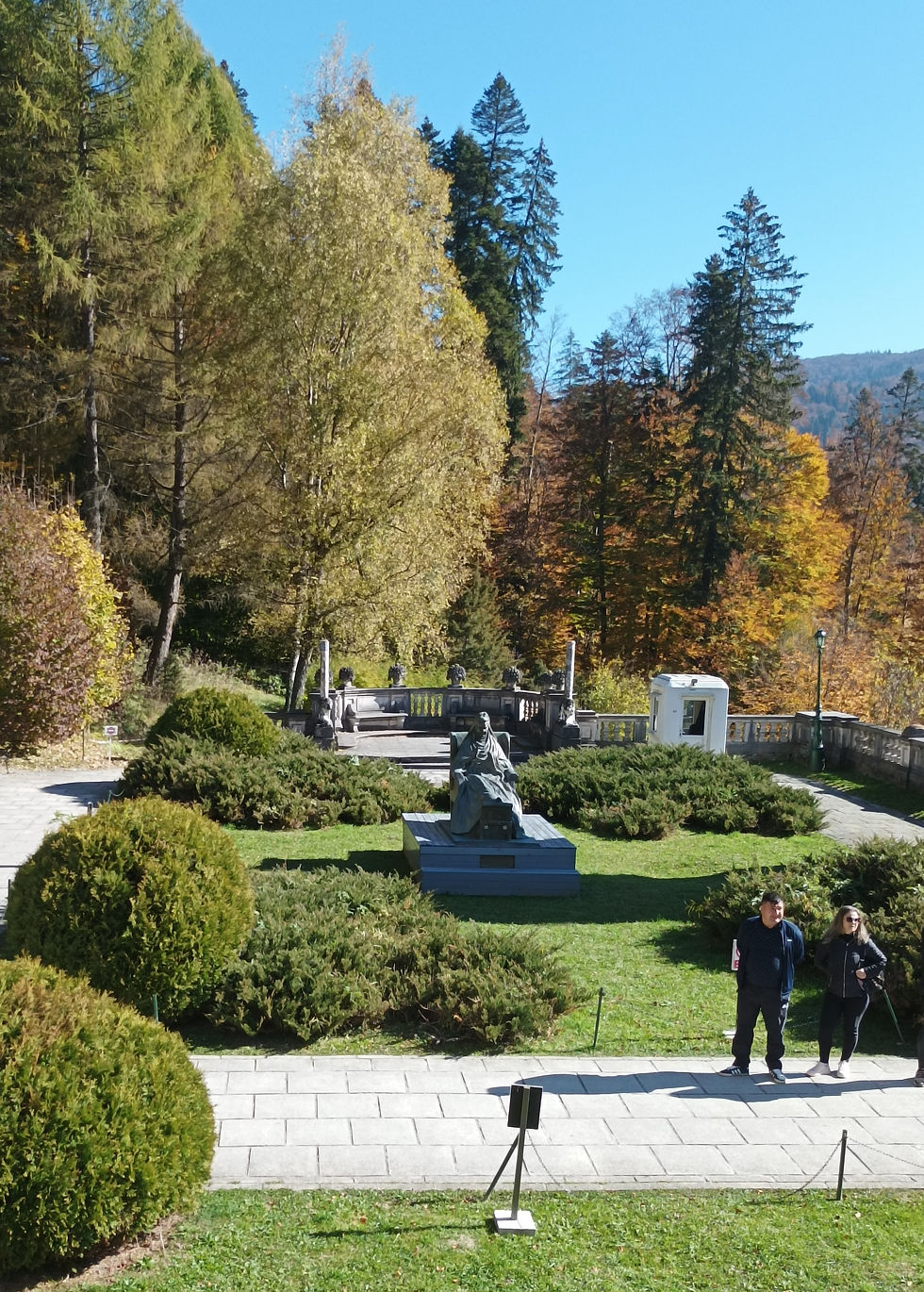Chambers at Large in the Fortified Church of Prejmer and Peles Castle, Sinaia, Romania
- Amelia Chambers
- Nov 27, 2022
- 3 min read
Updated: Oct 2, 2023
One of the most fascinating places I visited in Romania was a fortified church, a very unique building dating back to the 13th century in the town of Prejmer

The church, the central feature of this fortress, is surrounded by thick walls in which are large rooms, shelters for bygone villagers and their livestock when invaded by warring armies.

To access these rooms I had to climb steep steps, almost ladders, then negotiate very narrow corridors and passageways. It really pays to keep fit in order to make the most of visiting such places, but it was worth it to see the care taken by the craftsmen in the construction of this marvellous edifice, now a UNESCO site.

The outside walls have features typical of a fortress: a portcullis at the entrance, arrow slits and machicolations (the holes through which boiling oil or such was poured down on the advancing enemy). The fortification was invaded over fifty times, but only captured once, a testament to the architects and builders.

In complete contrast to the fortress in Prejmer is Peles Castle in the town of Sinaia, named after Mount Sinai. I would argue this building is more a palace than a castle, it being the summer residence of King Carol I who began construction in the late nineteenth century.

Outside the building looks exactly like a setting from a fairy tale and I wasn’t surprised when I flicked to a romantic Christmas movie on Netflix and recognised the location as Peles Palace. The movie entitled A Christmas Prince utilises the opulence of the palace to great effect and it is certainly beautiful in the snow. Put your feet up, watch the movie and you will see what I mean.

Inside King Carol has decorated the palace in many different styles, none of which were to my taste, some of the rooms being extremely dark, despite the glorious sunshine streaming through the windows and stained glass ceilings.

The favoured wood seemed to be mahogany, therefore the furnishings were sombre, but one particular dresser caught my eye as gargoyles were carved at the top of the piece which was a reminder to me of the macabre folklore associated with Transylvania.

In contrast a door was carved with a biblical tale of Eve and the serpent, tempting her with the apple from the tree of knowledge.

Another fascinating piece was a fully armoured knight on horseback in the armoury, surrounded by pistols and weapons on the wall. The weight of that armour had to be tremendous and I always marvel at the stamina, skill and strength of medieval knights able to wield a weapon, control a horse and remain in the saddle. (The horse had to be a fearsome , brave and mighty too!)

Being a summer residence I think King Carol I, and later King Michael, would have spent more time in the grounds than inside the palace. The gardens were beautiful and the trees were stunning dressed in their autumnal leaves and I sat outside to enjoy a pot of tea and a cream cake. (There were no doughnuts!)

Peles Castle is a beautiful spot to visit, but the more fascinating and unique was the fortification in Prejmer which will remain with me for some time if only for the fact that within the fortification was a display of farm equipment and household implements from bygone years.

Almost everything on display, used by Romanian countryfolk, was used by my forefathers in Ireland: the hand plough, the butter churn, the washing board, the wringer, the list goes on. Even the settle bed was similar to one in my great-grandmother’s house. Romania is to the far east of Europe, Ireland to the far west, a distance of just over 3000 km, but people worked and lived very much the same; used the same tools, expended the same manual labour, raised their families and worked the land. I found that quite a sobering thought. Perhaps you will too.
***
For more about my trip to Romania please visit:




As always, I enjoyed reading your post with colorful descriptions. I had to look up the difference between a castle and a palace; and now I know. I sent the link to my Romanian hiking friend in hopes that she will enjoy this post as much as the last one I sent to her.